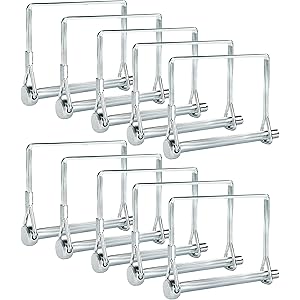As I sit down to explore the fascinating history of mobile homes, I can’t help but feel a sense of wonder at how these structures have evolved over the decades. From their humble beginnings to the modern marvels we see today, mobile homes tell a story of innovation, resilience, and shifting societal needs. In this article, I invite you to join me on a journey through time to discover how long mobile homes have been around, their historical significance, and what they mean for us today.
The Origins of Mobile Homes
To truly understand the journey of mobile homes, we must first travel back to the early 20th century. The concept of mobile living began to take shape during the 1920s, when companies started producing trailers designed for travel. These early trailers were often constructed from wood and metal, aimed primarily at families looking to enjoy vacations on the road.
- The 1920s: The introduction of travel trailers marked the beginning of mobile living. They were often small and basic, primarily designed for short trips.
- The 1930s: The Great Depression led to innovations in affordability. Manufacturers began to create more durable and cost-effective options, making them accessible to a broader audience.
- The 1940s: During World War II, mobile homes became increasingly popular among military families and workers, leading to a surge in production.
By the end of the 1940s, the foundation for modern mobile homes had been laid, setting the stage for the next phase of their development.
Post-War Boom: The Rise of the Mobile Home
The post-war era brought significant changes to American society. Soldiers returning home from war sought affordable housing solutions, and mobile homes emerged as a viable option. In the 1950s, mobile homes began to gain popularity as an affordable alternative to traditional housing.
- 1950s: The introduction of the first mobile home park provided a sense of community for residents. These parks became hubs of social interaction and stability.
- 1960s: The mobile home industry experienced rapid growth. Manufacturers began offering larger models with more amenities, appealing to families looking for comfortable yet affordable living solutions.
- 1970s: The introduction of the HUD Code in 1976 standardized construction and safety regulations for mobile homes, enhancing their appeal and safety.
The 1970s marked a turning point in the perception of mobile homes. They were no longer seen merely as temporary living solutions but rather as a legitimate form of housing.
Modern Mobile Homes: A New Era
As we entered the 21st century, mobile homes underwent a significant transformation. Today, they are often referred to as manufactured homes, reflecting advancements in technology and design.
- Energy Efficiency: Modern mobile homes are built with energy efficiency in mind, featuring improved insulation and energy-efficient appliances.
- Design Innovation: Today’s manufactured homes offer a wide range of styles and layouts, allowing homeowners to choose designs that fit their lifestyle.
- Environmental Sustainability: Many manufacturers are adopting sustainable practices, using eco-friendly materials and construction methods.
This modern iteration of mobile homes has opened doors for many families, providing affordable housing options without sacrificing quality or aesthetic appeal.
The Cultural Impact of Mobile Homes
Throughout their history, mobile homes have played a significant role in American culture. They represent freedom, mobility, and the pursuit of the American Dream. Many people view mobile homes as a gateway to homeownership, allowing them to build equity and establish roots without the burden of traditional housing costs.
Moreover, mobile homes have become a symbol of resilience for many communities. During economic downturns and natural disasters, they often serve as temporary housing solutions for displaced individuals and families. In this way, mobile homes have not only adapted to societal changes but have also provided much-needed support during challenging times.
Case Studies: The Impact of Mobile Homes on Communities
To illustrate the impact of mobile homes further, let’s look at a few case studies that highlight their significance.
Case Study 1: The Aftermath of Hurricane Katrina
In the wake of Hurricane Katrina in 2005, thousands of families lost their homes. Mobile homes became a critical resource for providing temporary housing for those displaced.
- FEMA (Federal Emergency Management Agency) utilized mobile homes as temporary shelters, allowing families to regain a semblance of normalcy while rebuilding their lives.
- This incident showcased the versatility and rapid deployment capabilities of mobile homes in crisis situations.
Case Study 2: Affordable Housing Initiatives
In many regions, mobile homes have been integral to affordable housing initiatives. For example:
- In California, organizations have partnered with manufacturers to create sustainable mobile home communities for low-income families.
- These initiatives not only provide affordable housing but also focus on community development and environmental sustainability.
Such examples demonstrate the potential of mobile homes to address pressing housing challenges in society.
Statistics: The Growing Popularity of Mobile Homes
The data surrounding mobile homes is compelling and indicative of their growing acceptance:
- According to the U.S. Census Bureau, over 22 million Americans live in manufactured homes.
- The manufactured housing industry has seen consistent growth, with a 15% increase in shipments from 2019 to 2020 alone.
- In 2020, the average cost of a new manufactured home was approximately $110,000, compared to the national median price of a site-built home at around $320,000.
These statistics underscore the affordability and accessibility of mobile homes, making them an attractive option for many families seeking homeownership.
Challenges and Misconceptions
Despite their benefits, mobile homes often face challenges and misconceptions that can hinder their acceptance in society. Some common myths include:
- Quality Concerns: Many people associate mobile homes with poor quality or safety issues. However, modern manufactured homes are built to stringent standards and often exceed traditional housing quality.
- Stigmatization: There is a prevalent stigma surrounding mobile homes, often viewed as inferior housing. This perception can lead to discrimination in zoning and lending practices.
- Resale Value: Concerns about depreciation can deter potential buyers. However, many manufactured homes appreciate in value, especially in desirable locations.
Addressing these misconceptions is crucial for promoting a more accurate understanding of mobile homes and their place in the housing market.
Looking Ahead: The Future of Mobile Homes
As I reflect on the journey of mobile homes, I can’t help but feel optimistic about their future. With advancements in technology, design, and sustainability, mobile homes are poised to play an even more significant role in addressing housing shortages and providing affordable options for families.
- Emerging technologies such as smart home integration are set to enhance the functionality and appeal of manufactured homes.
- As awareness of environmental issues grows, the demand for sustainable housing solutions, including eco-friendly mobile homes, will likely increase.
- Policy changes aimed at reducing zoning barriers and improving financing options for manufactured homes will further promote their acceptance.
The potential for mobile homes to adapt to the changing needs of society is immense, and I am excited to see how they will continue to evolve.
Conclusion: A Journey Worth Celebrating
In conclusion, the history of mobile homes is a testament to innovation, resilience, and the ever-changing landscape of housing in America. From their origins in the early 20th century to the modern manufactured homes we see today, mobile homes have proven to be a valuable asset in providing affordable housing solutions.
As we move forward, it is essential to challenge the misconceptions surrounding mobile homes and recognize their potential to address pressing housing challenges. Whether you view them as a temporary solution or a permanent residence, mobile homes have a place in the narrative of homeownership and community.
I encourage you to share your thoughts on mobile homes and their journey. Have they played a role in your life or community? What are your perceptions of their future? Your insights are valuable in shaping the conversation around this important topic.
FAQ
Q: Are mobile homes safe?
A: Yes, modern mobile homes are built to strict safety standards, often exceeding those of traditional homes.
Q: Do mobile homes appreciate in value?
A: While they may depreciate initially, many manufactured homes appreciate in value, especially in desirable areas.
Q: What are the financing options for mobile homes?
A: Various financing options are available, including personal loans, traditional mortgages, and special programs for manufactured homes.
If you enjoyed this article, please consider signing up for our newsletter for more insights on housing trends and lifestyle topics. Don’t forget to share this article with friends and on social media to spread awareness about the journey of mobile homes!
Pinailer Pack of 10 Trailer Pins – 2-3/4" x 1/4" (L x W) – Featuring Trailer Hitch Pins, Shaft Locking Coupler Pins, PTO Pins and Lock Pins for Farm Trailers Towing, Lawn Equipment and Hitches
$9.99 (as of November 15, 2025 07:52 GMT -03:00 - More infoProduct prices and availability are accurate as of the date/time indicated and are subject to change. Any price and availability information displayed on [relevant Amazon Site(s), as applicable] at the time of purchase will apply to the purchase of this product.)
Sign up for our newsletter and stay up to date with exclusive news
that can transform your routine!





